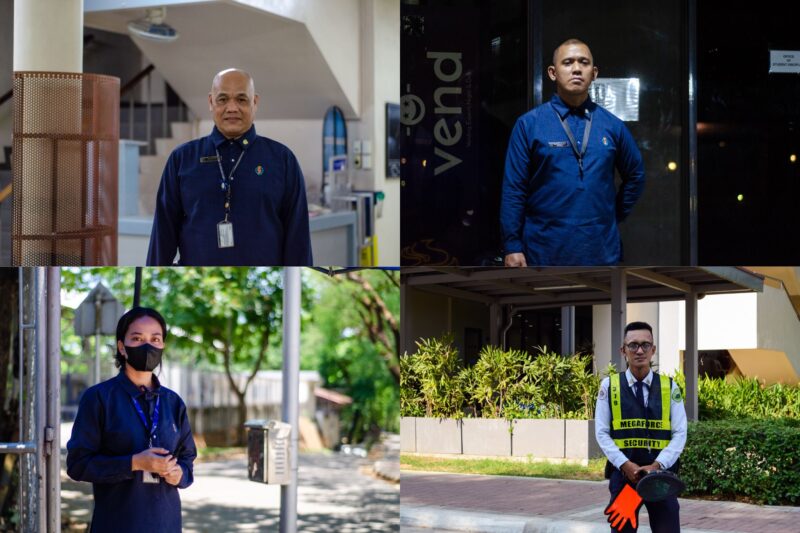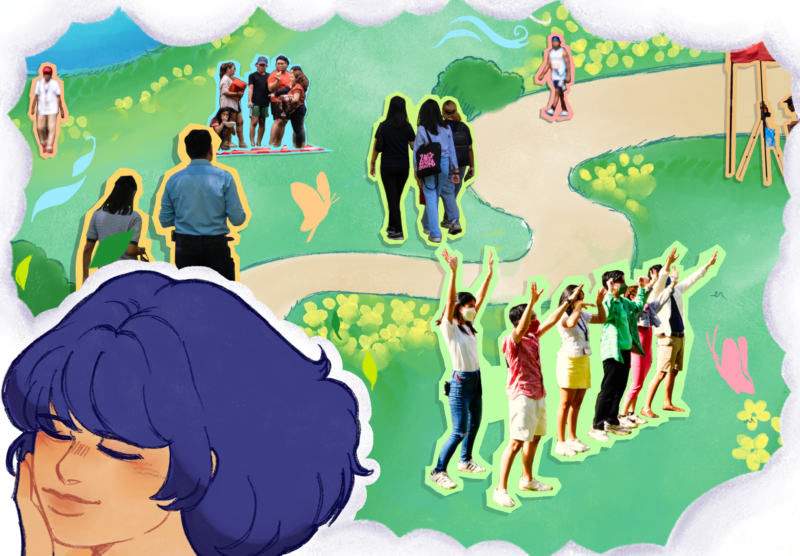The Sama Badjao tribe’s strong ties to the sea seeps into their traditions, holding water both in life and in death.
DIFFERENT CULTURES espouse different beliefs and perspectives on death. For the Sama Badjao tribe, the passage of one’s life begins and ends with the sea.
Called the “sea nomads of Asia,” the Sama Badjao tribe regards the water with reverence. Water has become a quintessential component of their culture and a primary source of their livelihood and survival, manifested in their seafaring lifestyle. As maritime merchants and traders, the element is more of a familiar friend than a foe.
The Sama Badjao tribe’s sense of fellowship and strong connection with the sea translates into the burial practices of their dead—a commemoration of their journey beyond the shore.
A vast voyage
Rasul Cegales is the Maharaja or warrior of the Sama Badjao tribe in Zamboanga City. He believes that death is a favor that is granted to a person. Along with the tribe, he attests that death is a foreseeable, natural occurrence.
“Pinaghahandaan ‘yung mga ganyang bagay. Uuwi tayo diyan kahit saan tayo mapupunta (We prepare for those kinds of things. We will arrive there, no matter where we go),” Cegales says.
Grief ebbs and flows in tumultuous surges. However, the Badjao tribe sees it as an ingenuous response to death—a sentiment that Jelly Hamis, their Dayang-Dayang, or princess, feels. “As time passes by, natural lang na if namatay ‘yung tao, kailangan na natin siyang i-let go (As time passes by, it’s only natural that if a person has died, we need to let them go),” Hamis says.
In the tribe’s burial rites, the body will first be wrapped in plain white cloth and then placed into a hollow coffin made out of wood. From there, household members will carry the coffin from their dwelling place to the mosque, where they will offer a final prayer before the send-off. The Badjao are buried within their ancestral land, typically situated along coastal regions, so the departed can remain close to the sea.
The Badjaos refrain from burying the deceased in traditional coffins, opting instead to lay them to rest wrapped in bandages. To indicate the location of the head, the soil is then marked with a reference point. The tribe believes that people should return in the same way they arrived, so the wooden coffin only acts as a means of transport.
“[K]ung saan po kami ginagawa, doon kami babalik, tulad ng lupa, apoy, tubig, hangin,” (Where we are made, there we will return, like the earth, fire, water, and air), Cegales explains. For them, the deceased should be liberated from temporal bounds such as manmade burial materials.
The depth of the tribe’s understanding of grief traverses the way they lay the departed. Such practices are sometimes influenced by heritage and Islamic faith, and passed down in honor of their ancestors. “The practice of burial is influenced by religion but [there are] parts [that are not] affirmed [by it],” May*, another member of the Sama Badjao tribe says. However, despite being a “mixed” process, a large part of the practice ties back to the water, a fundamental element of the tribe.
Anchors aweigh
From cleansing the body of the deceased to sending off their spirit in burial, the people closest to the dead, both in blood and in bond, play a significant role in a Badjao’s interment. The intimacy of such processes can only be carried out by the dead’s immediate family members.
With the welfare of the dead being their top priority, the Badjaos hurry to set up their burial arrangements. “Kung ang Badjao [ay] namatay, hindi ka maghihintay ng isang araw, dapat on the spot. [Mayroong] paniniwala [na] kailangan ka ng Allah,” Rasul elaborates.
(If a Badjao dies, you don’t wait for a day, [the burial] should be on the spot. The belief is that you are already needed by Allah.)
Burying the dead promptly provides comfort to the living because, for the Badjaos, death is a blessing bestowed upon the departed as they revert back to their origins. Consequently, they promise not to hold their loved ones back from reaping the benefits of the afterlife. They stay late into the night, praying for their dead’s ascension to paradise after they have descended six feet under.
During the burial, the Badjaos go around the room while saying kind words to the deceased, celebrating them in death just as much as in life. “Para iyon [sa] kabutihan, kahit kaunti [ang mensahe] ay kumbaga [napag]-uusapan siya. Bilang pagmamahal, maramdaman niya kung gaano nanghinayang [ang] mga tao,” Cegales says, breaking down the intention behind this process.
(This is a form of kindness, so that even in a small way, they will be remembered. As an expression of love, they can feel how much people regret their loss.)
After the burial, the Badjaos look after the dead for seven days. Hamis illustrates that there should still be a jaga—a mat to lay on—even if the deceased is no longer there. This practice stems from their belief that the soul still wanders around places where they are most familiar with during the transitional phase—where the dead have yet to accept their own passing.
This high regard for the well-being of one trickles from the Badjaos’ strong sense of communal fellowship. More than a translation of their values, these practices ensure that the dearly departed are honored by the people whom they have loved and who have loved them. The enumerated traditions signal that rituals are a precursor to remembrance. They assure that not only the spirits find solace, but also those they left behind.
Grief in waves
While the Badjao are committed to preserving their cultural roots, their burial practices currently face the risk of eradication. The threat of modernization, lack of regard for indigenous people’s rights, and added economic burdens push for the eradication of some of the Badjaos’ burial practices.
Cegales recounts recent mishaps in burying their dead, as they are now asked to pay for their burials that take place on their own ancestral land. “Nahirapan [kami] sa paglibing diyan dahil may tumatayo nang bahay diyan [sa] beach (It was challenging to bury there because there were houses standing there, by the beach),” he says.
Disputes in land ownership have also butchered their ritual to bury their dead in one place under their ancestral domain. Instead, some of their dead are buried in another site, separated from the rest of their ancestry’s tombs.
Additionally, growing financial burdens corner the Badjao community to forego significant components in their burial traditions. The lack of budget would implore them to rent metal coffins instead of carving their own out of wood. Rather than starting from scratch, they opt to reduce costs through renting, since the casket will not be buried with the dead.
Wooden coffins also cannot be used twice, as they are broken apart shortly after the burial. Instead, the lumber is often incorporated into the walls and ceilings of the dead’s abode, transforming the wood into another life form.
Whether in life or in death, the Badjaos find meaning in the continuous flow of their traditions. Hindering them from observing these practices not only denies them the comfort of their heritage but also prevents their dead from crossing over to the afterlife by their culture’s own customs and means. While the loss can be overwhelming, a proper burial that adheres to their cultural customs provides an outlet for their grief to be processed.
Like unyielding waves, the Badjao persist in their unique way of honoring the departed—a deep reverence for where they came from, performed by the community that journeyed alongside them.
*Editor’s Note: The interviewee’s name has been changed at her request to protect her identity and privacy.







